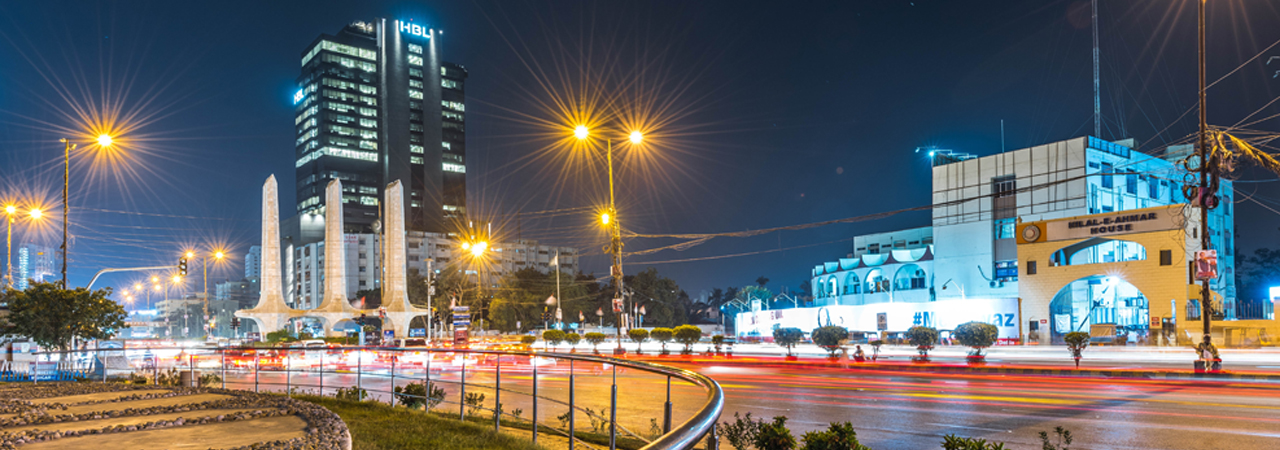
Pakistan’s Real Estate Industry
Pakistan, strategically located in South Asia, shares borders with India, China, Afghanistan, and Iran, giving it a unique geographical advantage for trade and economic growth. Covering 881,913 square kilometers, it is the fifth most populous country in the world, with over 240 million people. The country’s diverse landscapes include the Himalayan mountains in the north, vast plains of Punjab and Sindh, and the coastal belt along the Arabian Sea, making it an attractive destination for various industries, including real estate and infrastructure development.
Pakistan Real Estate Market
Economically, Pakistan is classified as a developing market, with real estate being a key driver of growth, contributing approximately 3.7% to GDP. With rapid urbanization, an expanding middle class, and increasing housing demand, the real estate sector presents significant investment opportunities. However, challenges such as regulatory uncertainty, inflation, Law & Order situation and infrastructure gaps continue to impact market stability
Macroeconomic Impact of Real Estate in Pakistan
| Indicator | 2018 | 2019 | 2020 | 2021 | 2022 | 2023 | 2024 |
| Real Estate GDP Contribution (%) | 2.9% | 3.1% | 2.8% | 3.3% | 3.5% | 3.7% | 3.9% |
| Construction Sector Growth (%) | 7.1% | 5.8% | -0.5% | 9.1% | 6.7% | 5.2% | 6.0% |
| Total Employment in Real Estate (Million) | 2.5 | 2.8 | 2.6 | 3.0 | 3.3 | 3.5 | 3.8 |
| Annual FDI in Real Estate (USD Billion) | 0.8 | 0.9 | 0.6 | 1.1 | 1.3 | 1.5 | 1.8 |
| Annual Housing Demand (Million Units) | 0.7 | 0.9 | 1.1 | 1.3 | 1.5 | 1.8 | 2.0 |
Key Takeaways:
- Real estate contributes ~3.7% to Pakistan’s GDP, with a steady growth trajectory.
- The sector employs over 3.5 million people, playing a vital role in job creation.
- Housing demand outpacing supply, creating opportunities for new developments.
2. Residential Market Performance & Trends
A. Property Price Growth in Major Cities (2019–2024)
| City | 2019 | 2020 | 2021 | 2022 | 2023 | 2024 |
|---|---|---|---|---|---|---|
| Karachi | 6.5% | 3.2% | 10.8% | 9.1% | 8.4% | 10.2% |
| Lahore | 7.1% | 4.0% | 12.2% | 10.5% | 9.8% | 11.5% |
| Islamabad | 5.8% | 2.5% | 8.7% | 7.3% | 6.9% | 9.0% |
| Gwadar | 12.4% | 8.9% | 15.7% | 14.3% | 13.5% | 16.5% |
Key Takeaways:
- Lahore and Karachi show the highest residential price growth, making them prime investment destinations.
- Gwadar’s real estate market is booming due to CPEC-driven infrastructure projects.
B. Rental Yield Comparisons
| City | Apartment Rental Yield (%) | House Rental Yield (%) |
| Karachi | 6.5% | 5.8% |
| Lahore | 6.8% | 5.5% |
| Islamabad | 5.9% | 5.2% |
| Gwadar | 7.2% | 6.5% |
Key Takeaways:
- Apartments offer higher rental yields than houses in major cities.
- Gwadar has the highest rental yields, making it attractive for long-term investors.
3. Commercial Real Estate Insights
Growth in Commercial Real Estate Investments (2019–2024)
| Year | Investment in the Commercial Sector (USD Billion) | Annual Growth Rate (%) |
| 2019 | 3.1 | 5.4% |
| 2020 | 2.8 (COVID-19 Impact) | -9.7% |
| 2021 | 3.5 | 11.2% |
| 2022 | 4.0 | 14.3% |
| 2023 | 4.6 | 13.1% |
| 2024 | 5.2 | 12.5% |
Key Takeaways:
- Commercial real estate investments rebounded post-COVID, with double-digit growth.
- Retail spaces and office developments are driving sector expansion in Lahore and Karachi.
4. Future Investment Hotspots
| Investment Area | Expected Growth (%) | Key Factors Driving Growth |
| Gwadar | 15-20% | CPEC, Port Development, Free Trade Zones |
| Lahore DHA & Bahria Town | 10-12% | High demand for gated communities |
| Karachi Clifton & DHA | 8-10% | Prime commercial & residential area |
| Islamabad G-11 & G-13 | 7-9% | Increasing demand for premium apartments |
| Faisalabad Industrial Zones | 12-15% | Growth in manufacturing & export industries |
Key Takeaways:
- Gwadar remains Pakistan’s top investment hotspot, with CPEC-backed projects fueling property appreciation.
- Lahore’s DHA and Bahria Town offer the best residential investment opportunities due to high demand.
- Faisalabad’s industrial zones are set for rapid commercial property growth.
5. Conclusion & Investment Recommendations
Pakistan’s real estate sector remains a lucrative investment avenue, driven by lowering of interest rates, urbanization, government incentives, and FDI interest. However, market volatility and policy shifts necessitate careful investment planning.
Investment Strategies:
- High-Risk, High-Return: Invest in Gwadar and Faisalabad industrial zones for long-term capital gains.
- Stable & Secure: Buy rental apartments in Karachi, Lahore, and Islamabad for consistent rental income.
- Commercial Boom: Invest in retail spaces in mixed-use developments for strong rental yields.
- Emerging Smart Cities: Look at Capital Smart City and Lahore Smart City for futuristic real estate opportunities.
With the right strategy, investors can capitalize on Pakistan’s evolving real estate landscape and secure high returns in the coming years.
Contact us:
Haris Ahmed
ECOVIS FAMCO Associates
State Life Building, No.1 A, Ground Floor, I. I. Chundrigar Road74000 Karachi
Phone: +92 21 32422344
www.ecovis.com/pakistan


